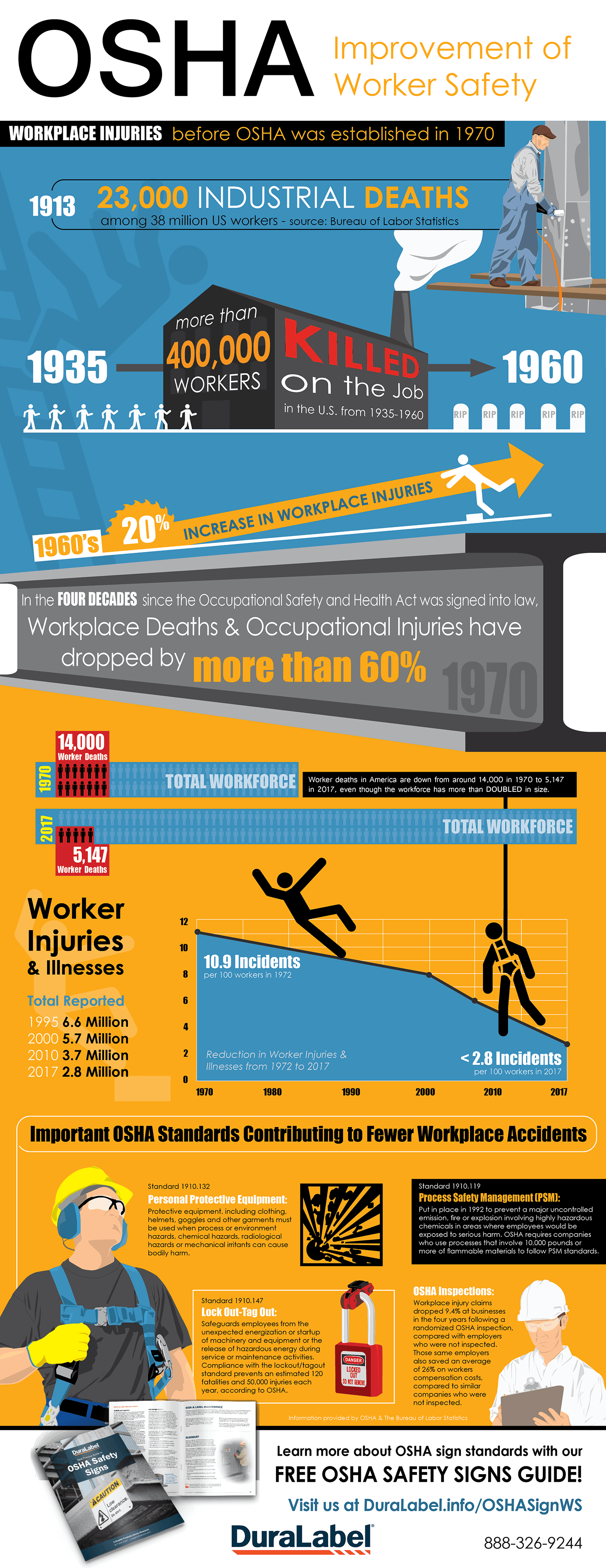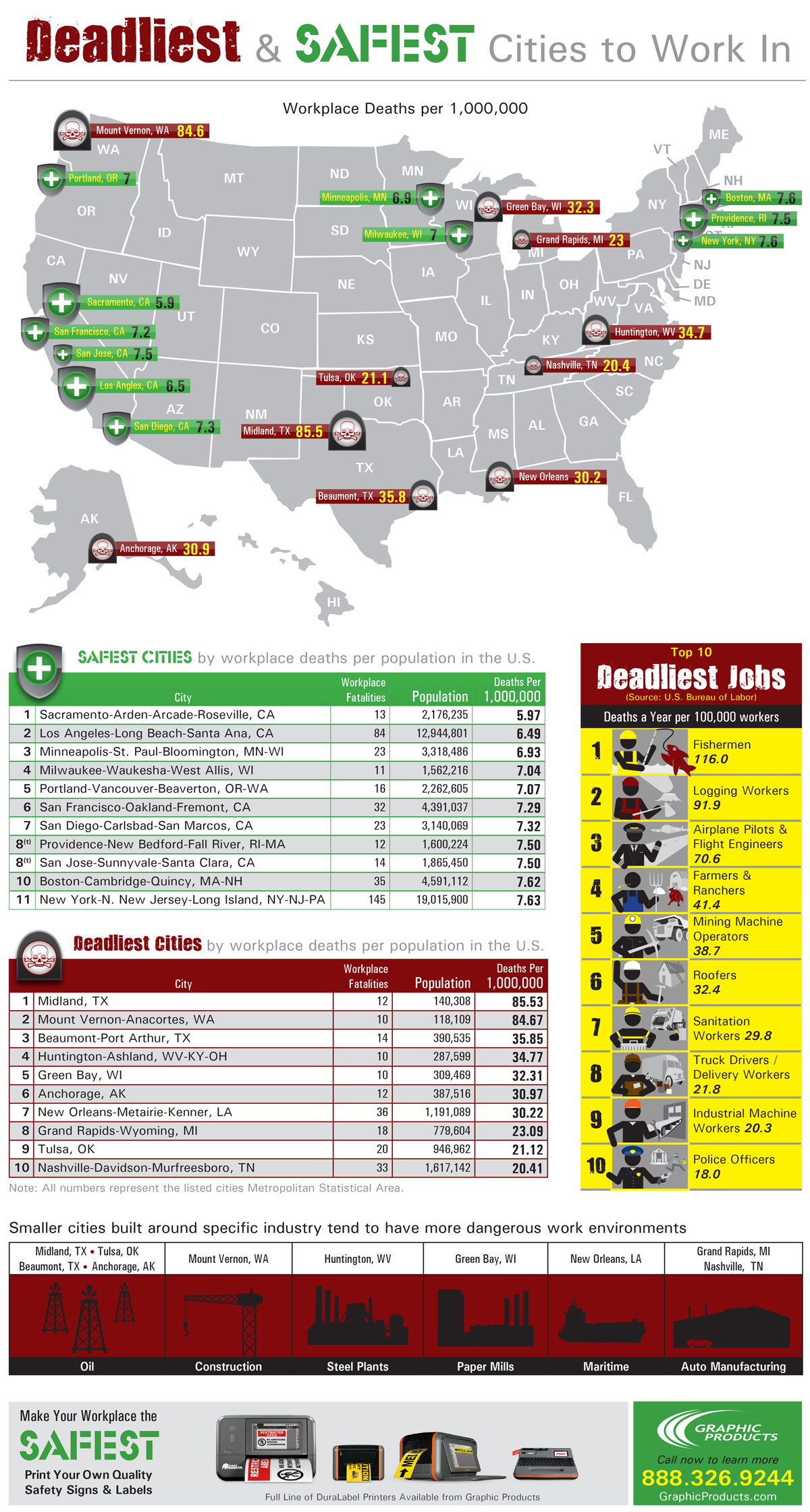The Occupational Safety & Health Administration (OSHA) was established "to ensure employee safety and health in the United States by working with employers and employees to create better working environments."
OSHA continues to strive towards making the workplace as safe as possible-much of it through visual communication.
.png)









